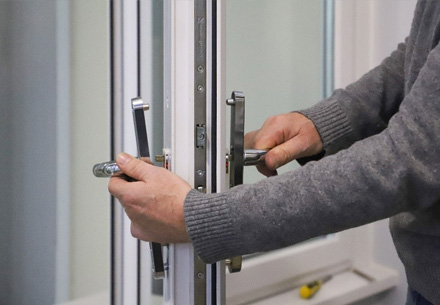uPVC doors are popular in many homes and businesses because of their durability, insulation, and security features. But like any door, the locks on uPVC systems can wear out, become damaged, or need upgrading for better security.
Changing a lock on a uPVC door might seem straightforward at first, but it involves specific steps and knowledge of the locking mechanism. In many cases, a professional locksmith can make the process much easier, quicker, and safer.
Understanding uPVC Door Locks
Before diving into the process, it’s important to know that uPVC doors typically use a euro cylinder lock as part of a multi-point locking system. These locks engage multiple points—usually hooks, bolts, or rollers—when you lift the handle, offering more protection than a single lock.
Because of this complexity, changing the lock is not as simple as swapping out a traditional door lock. It requires precision, the right tools, and sometimes expert adjustment to ensure the door remains secure and easy to use.
Steps to Change a Lock on a uPVC Door
If you decide to attempt the task yourself, here’s a general guide to the process:
1. Gather the Tools
You’ll need:
- A screwdriver (usually Phillips or flathead).
- A tape measure.
- A replacement euro cylinder lock (matching the correct size).
- The key for the old lock.
2. Measure the Existing Lock
Locks for uPVC doors come in different sizes. Measure the cylinder from the screw hole in the center to each end (both sides), as uPVC doors often require asymmetrical locks. Getting the wrong size will cause fitting issues or leave your lock vulnerable to tampering.
3. Remove the Fixing Screw
Open the door and locate the long fixing screw on the edge of the door, positioned in line with the cylinder. Remove this screw carefully, as it holds the lock in place.
4. Turn the Key to Release the Cylinder
Insert the key into the lock, turn it slightly (around 10–15 degrees), and gently pull the cylinder out of the door. If it sticks, keep adjusting the key angle until it slides free.
5. Install the New Lock
Insert the new cylinder into the hole, ensuring it sits flush with the handle and door edge. Once positioned correctly, replace and tighten the fixing screw.
6. Test the Lock
Check that the key works smoothly from both sides and that the multi-point locking system engages properly when you lift the handle.
Challenges of DIY Lock Changes
While these steps outline the basic process, DIY lock changes can be tricky. Common issues include:
- Buying the wrong lock size.
- Improper alignment of the cylinder.
- Difficulty engaging the multi-point system.
- Reduced security if the lock isn’t installed flush with the door.
Mistakes can make the door hard to lock or even leave your property vulnerable.
The Role of Locksmiths in Changing uPVC Door Locks
This is where professional locksmiths come in. Locksmiths Harlow Essex specialize in all types of locks, including the more complex mechanisms found in uPVC doors. Here’s how they make the job easier:
1. Accurate Assessment
Locksmith 24 hour emergency know exactly how to identify the correct lock size and type for your specific door, preventing the common mistake of buying the wrong replacement.
2. Proper Installation
They have the skills and tools to install the lock quickly and correctly, ensuring your door operates smoothly and securely.
3. Security Upgrades
If your old lock is outdated, locksmiths can recommend and fit higher-security options, such as anti-snap euro cylinders, which protect against break-in methods like lock snapping.
4. Handling Emergencies
If your lock is broken and you’re locked out, a locksmith can not only replace it but also gain entry without damaging your door.
5. Peace of Mind
Having a professional do the work gives you confidence that the lock is fitted correctly and your home is secure.
When Should You Call a Locksmith?
While a handy homeowner might change a basic uPVC lock, it’s best to call a locksmith when:
- You’re locked out or the lock is jammed.
- The lock is part of a complex multi-point system.
- You want to upgrade to a high-security lock.
- You’re unsure about the correct lock size or type.
- You need the job done quickly and without risk of mistakes.
Conclusion
Changing a lock on a uPVC door is possible as a DIY project, but it requires careful measurement, the right tools, and patience. Mistakes can compromise both the functionality of the door and the safety of your home.
Professional locksmith services offer a reliable solution. Locksmiths not only replace locks efficiently but also enhance your home’s security with the right products and expert installation. Whether you’re dealing with a faulty lock, lost keys, or simply upgrading your security, calling a locksmith ensures the job is done right—the first time.

